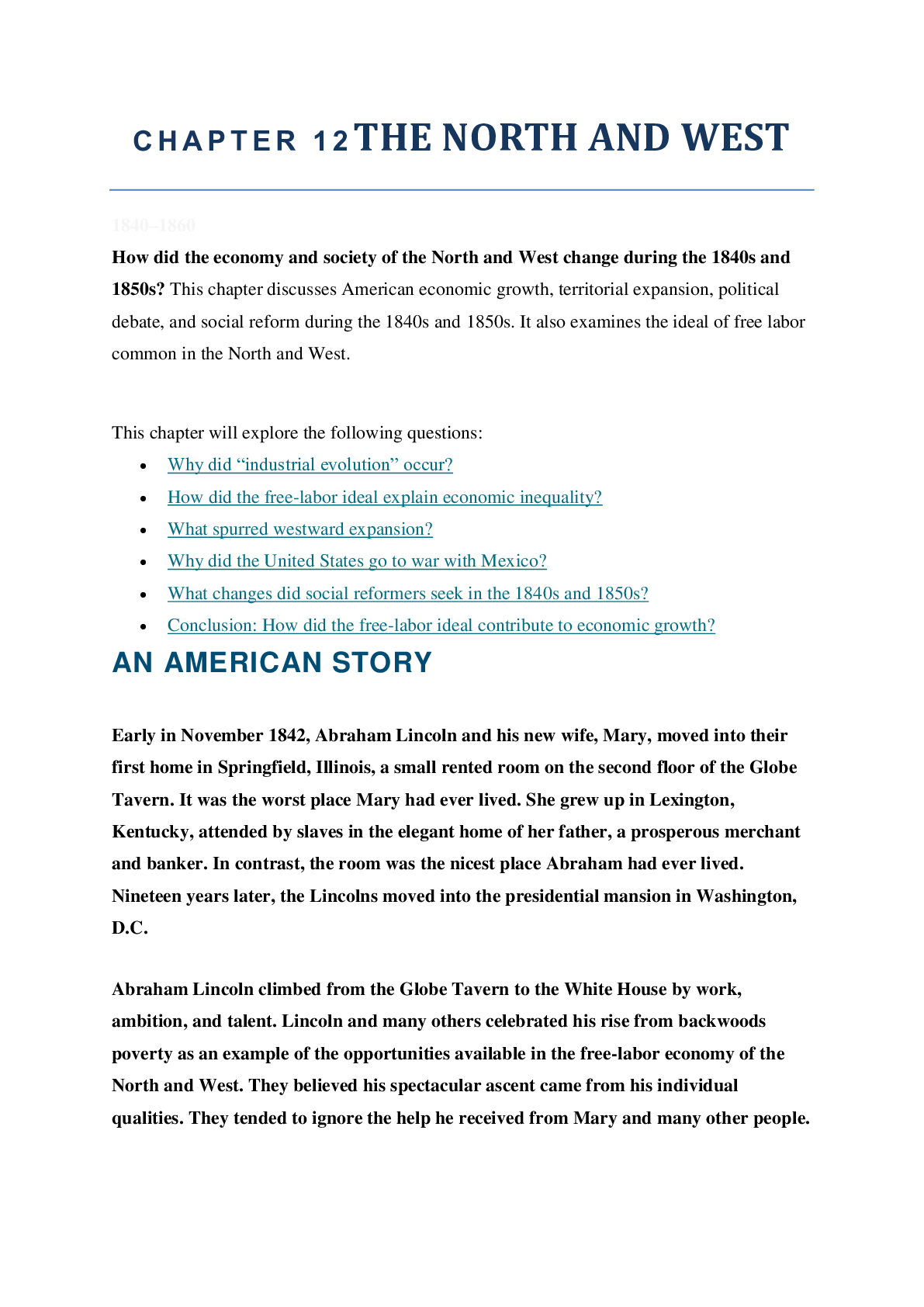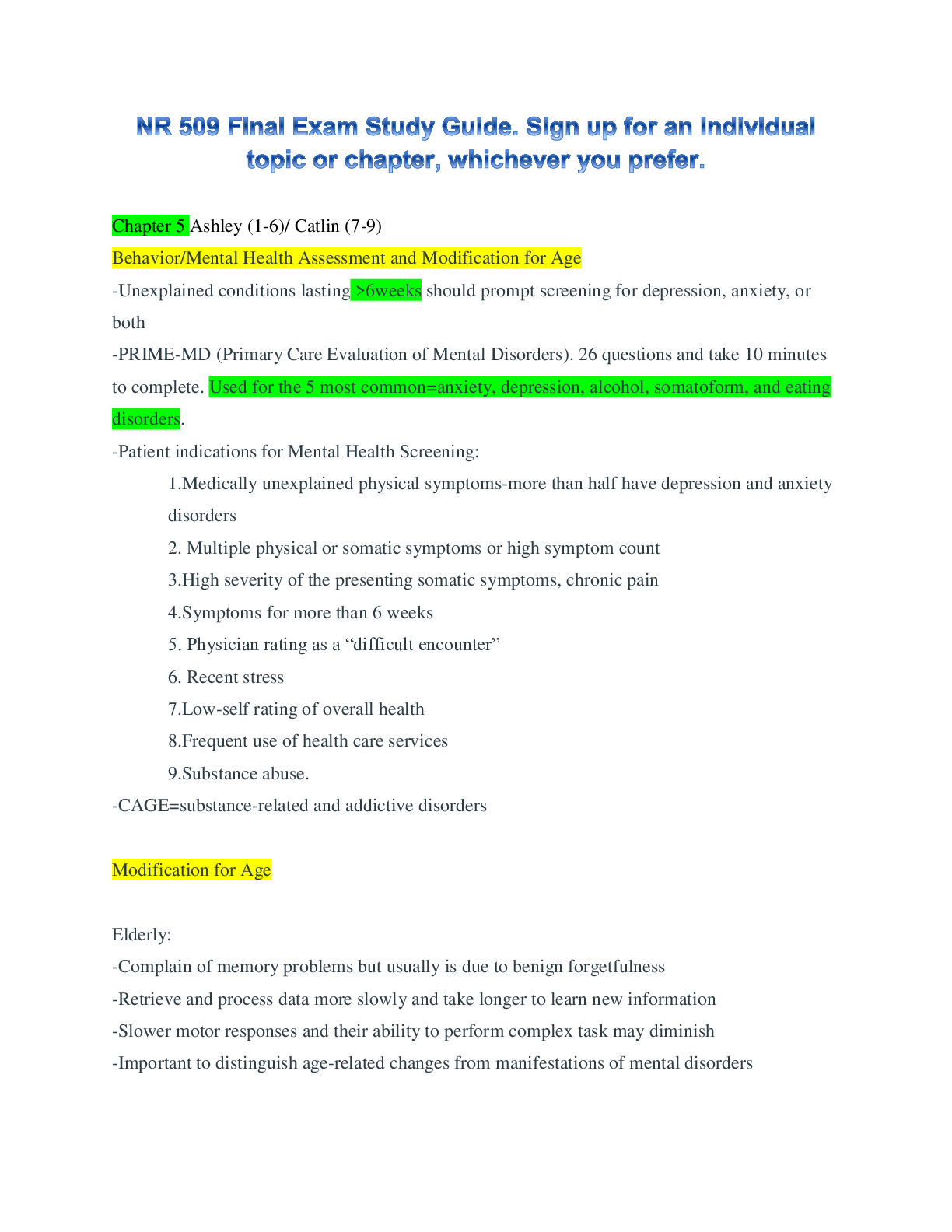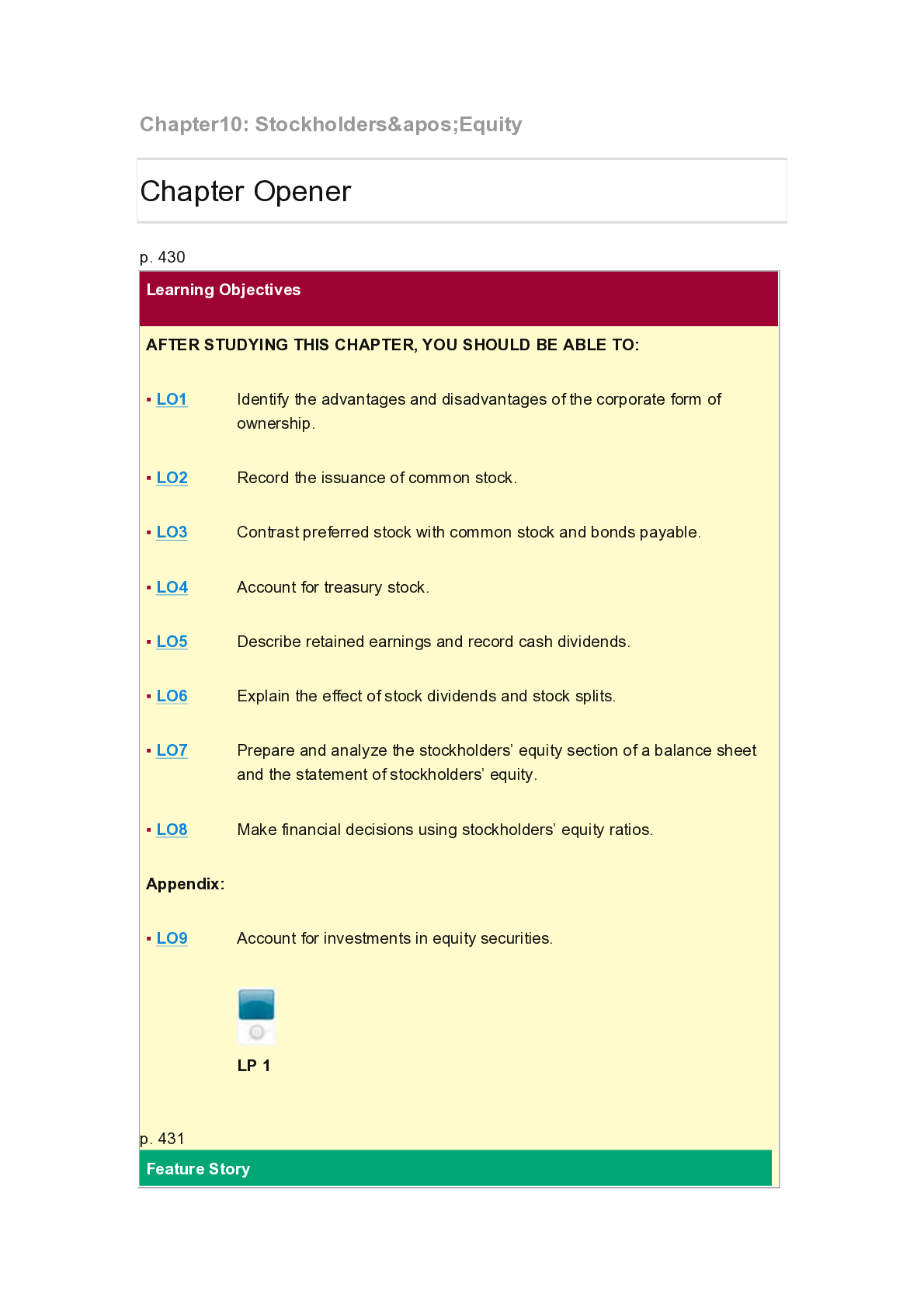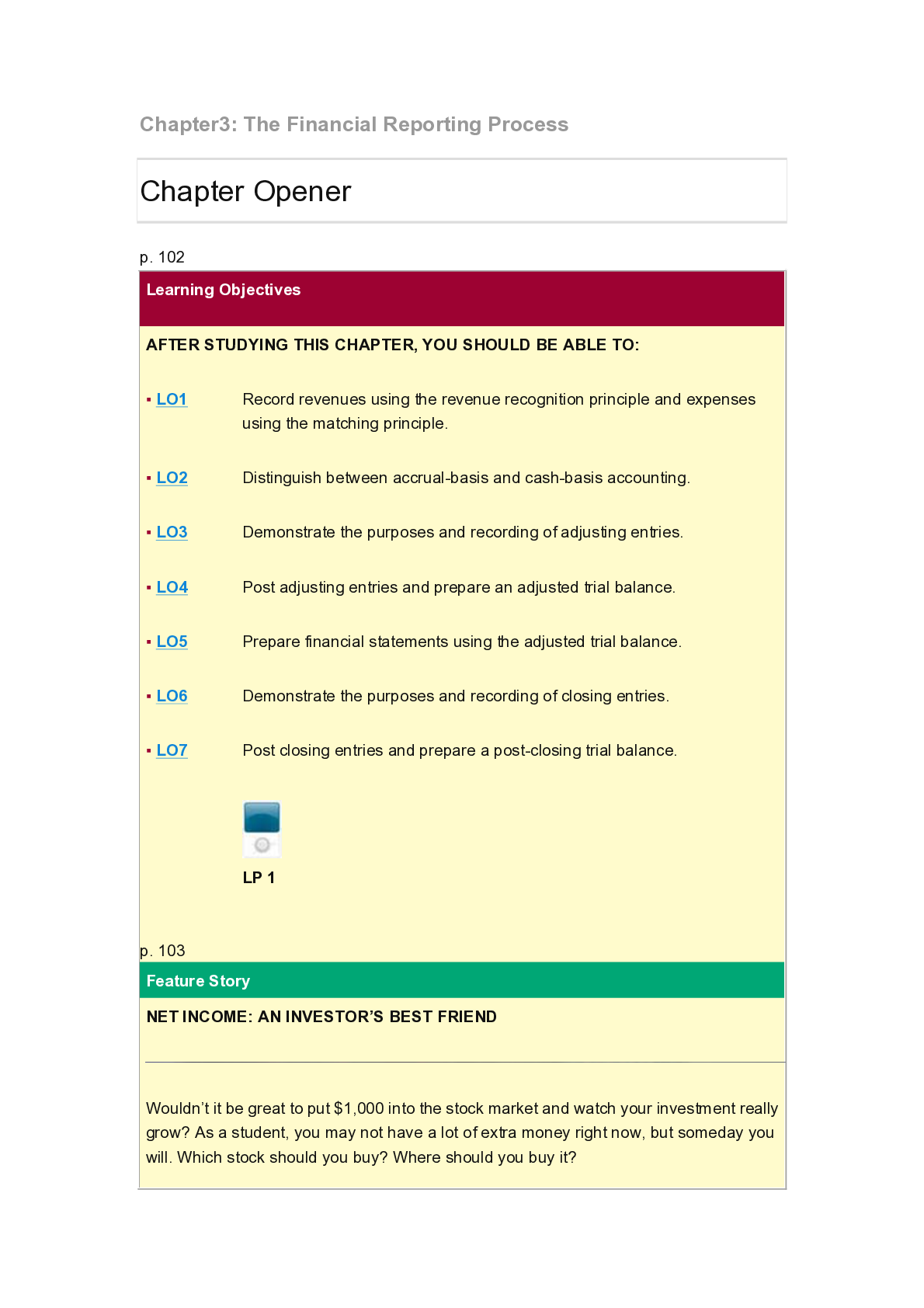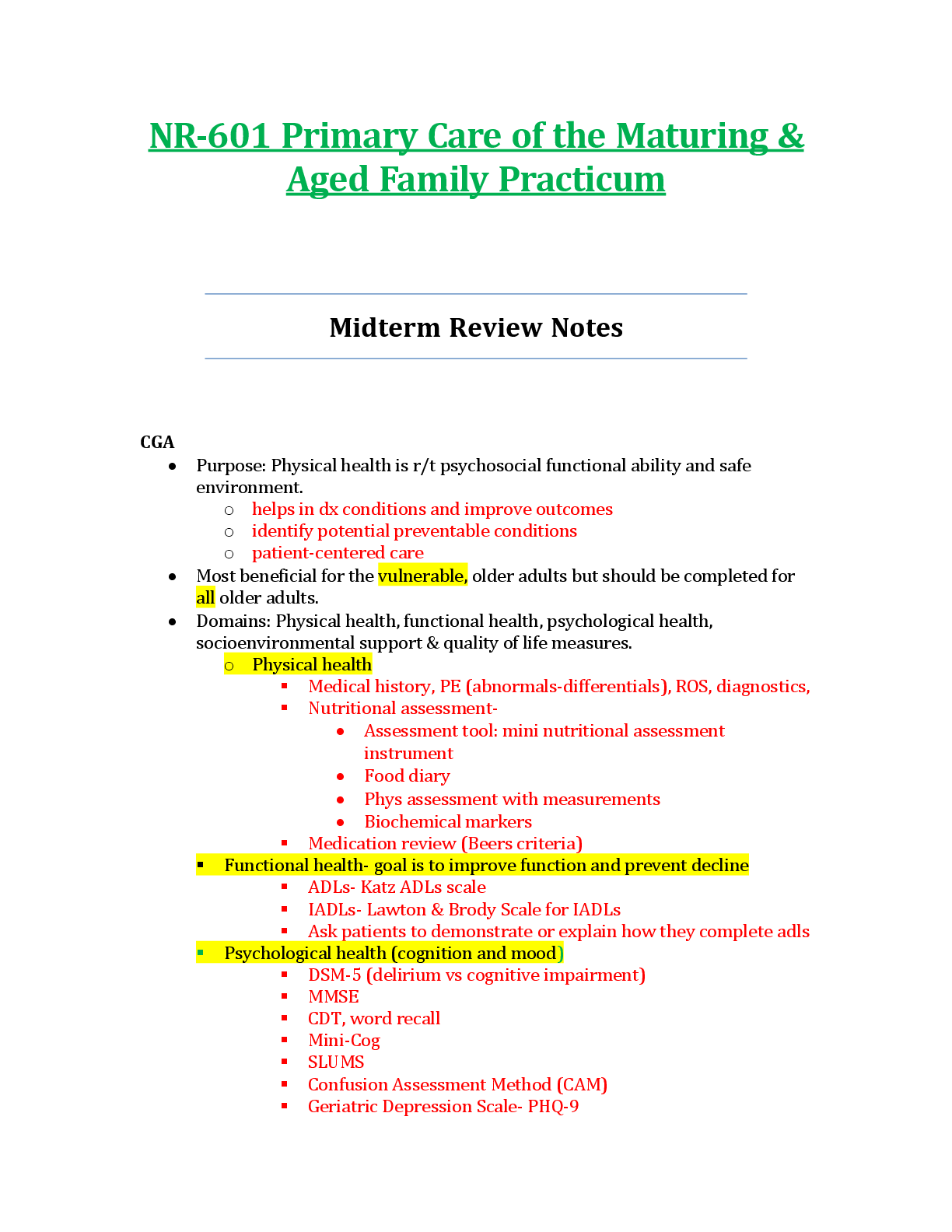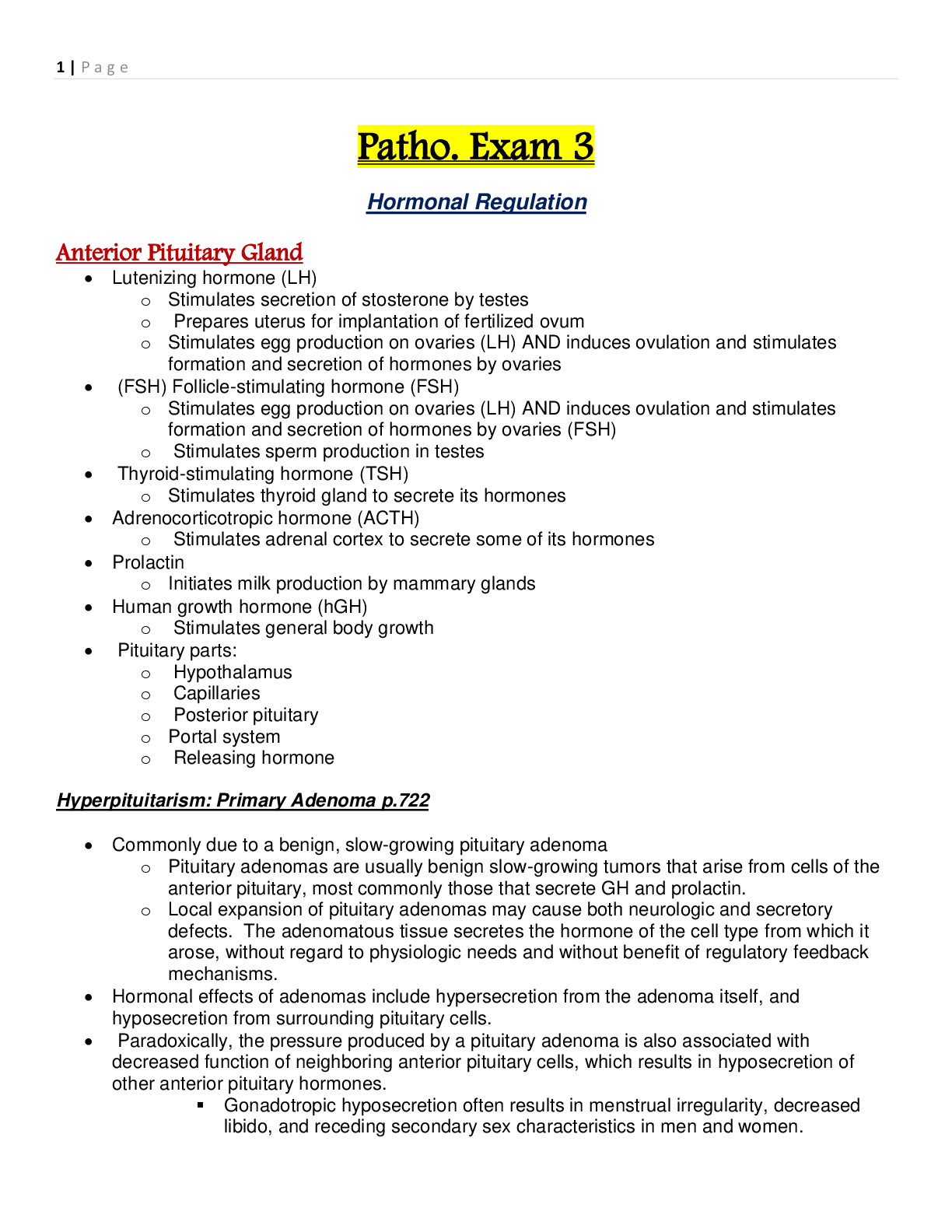History > Study Notes > The American Promise 8e; Roark: CHAPTER 12THE NORTH AND WEST | Study Guide; Analysis and review. Que (All)
The American Promise 8e; Roark: CHAPTER 12THE NORTH AND WEST | Study Guide; Analysis and review. Questions Explained
Document Content and Description Below
How did the economy and society of the North and West change during the 1840s and 1850s? • Why did “industrial evolution” occur? • How did the free-labor ideal explain economic inequality? ... • What spurred westward expansion? • Why did the United States go to war with Mexico? • What changes did social reformers seek in the 1840s and 1850s? • Conclusion: How did the free-labor ideal contribute to economic growth? Agriculture and Land Policy Railroads: Breaking the Bonds of Nature Railroads captured Americans’ imagination because they seemed to break the bonds of nature. When canals and rivers froze in winter or became impassable during summer How did the free-labor ideal explain economic inequality? The Free-Labor Ideal Economic Inequality ANALYZE EVIDENCE Spotlight: How Did the American Economy Compare to the Rest of the World?” In 1850, how did U.S. prosperity compare to that of the rest of the world? • ANALYZE THE EVIDENCE: Why did Britain have the world’s leading economy in 1850? What accounted for Britain’s success compared to the United States? • CONSIDER THE CONTEXT: What does the pattern of global prosperity and poverty in 1850 suggest about the motivations for immigration to the United States? • RECOGNIZE VIEWPOINTS: To what extent is per capita production a misleading measure of prosperity? Can you think of better measures? How did the comparative economic prosperity of the United States influence the experiences and ideas of Americans during the 1850s? • SUMMARIZE THE ARGUMENT: In 1850, how did U.S. prosperity compare to that of the rest of the world? • ANALYZE THE EVIDENCE: Why did Britain have the world’s leading economy in 1850? What accounted for Britain’s success compared to the United States? • CONSIDER THE CONTEXT: What does the pattern of global prosperity and poverty in 1850 suggest about the motivations for immigration to the United States? • RECOGNIZE VIEWPOINTS: To what extent is per capita production a misleading measure of prosperity? Can you think of better measures? How did the comparative economic prosperity of the United States influence the experiences and ideas of Americans during the 1850s? Immigrants and the Free-Labor Ladder How did the free-labor ideal explain economic and social inequality? What spurred westward expansion? Manifest Destiny Most Americans believed that their superior institutions and white skin bestowed on them a God-given right to spread across the continent. They imagined the West as a howling wilderness, empty and undeveloped Oregon and the Overland Trail American expansionists and the British competed for the Oregon Country—a vast region bounded on the CONNECTIONS: Why would most Americans find the Mormon practice of plural marriage so disturbing? How was the settling of the Utah Territory similar to and different from the settling of Texas? Earlier, in 1824, seeking to increase Mexican migration to the province of California, the Mexican government granted ranchos—huge estates devoted to cattle raising—to new settlers. Rancheros ruled over near-feudal empires worked by Indians whose condition sometimes approached that of slaves. In 1834, rancheros persuaded the Mexican government to confiscate the Franciscan missions and make their vast lands available to new settlement. QUICK REVIEW Why did westward migration expand dramatically in the mid-nineteenth century? Why did the United States go to war with Mexico? The Politics of Expansion Texans had sought admission to the Union almost since winning their independence from Mexico in 1836. But any suggestion of adding another slave state to the Union outraged most Northerners, who applauded westward expansion but imagined the expansion of liberty, not slavery. How did American political leaders accomplish the annexation of Texas? Golden California Another consequence of the Mexican defeat was that California gold poured into American, not Mexican, pockets. In January 1848, James Marshall discovered gold in the American River in the foothills of the Sierra Nevada. His discovery set off the California gold rush, one of the wildest mining stampedes in the world’s history. Between 1849 and 1852, more than 250,000 “forty-niners,” as the miners were known, descended on the Golden State. In less than two years, Marshall’s discovery transformed California from foreign territory into a state. What were the most significant consequences of the U.S. war with Mexico? James Marshall, Account of His Discovery of Gold, 1848 • RECOGNIZE VIEWPOINTS: What was James Marshall’s primary concern after he discovered gold? • ANALYZE THE EVIDENCE: What was Sarah Royce’s initial understanding of her nighttime encounter? How well did Sarah Royce’s and Daniel Woods’s previous experiences prepare them for the gold rush? • CONSIDER THE CONTEXT: How did the realities of gold rush California fit with the promises of manifest destiny? Why were women especially prominent in many nineteenth-century reform efforts? How does Abraham Lincoln’s view of the free-labor system compare with Henry Bellows’s views of the temptations and anxieties of material success? How did Lincoln’s and Bellows’s arguments about the free-labor system compare to the motivations of the men depicted in “The Drunkard’s Progress” or during the gold rush, as witnessed by Walter Colton? In what ways are the views of men as presented in the “Seneca Falls Declaration” comparable to those of Lincoln, Bellows, and the men in “The Drunkard’s Progress”? What evidence do the documents in this chapter provide about what women’s rights were in fact and what they should be? Each of the documents in this chapter provides evidence of the achievements and limitations that freedom offered Americans in the 1840s and 1850s. To what extent do the documents suggest that the problems of American society could be overcome by expanding or limiting freedom? 1. How did American transportation change between the presidencies of Thomas Jefferson (which began in 1801) and Abraham Lincoln (1861)? Americans transitioned from primarily water-based travel to land-based travel. The majority of new roadways were built on a north–south orientation by the 1860s instead of an east–west orientation. U.S. roadways were comprised of bumpy dirt roads in the early 1800s and they were later built into smooth, paved roads by the 1860s. American travelers relied less on traveling by horse and more on traveling via a network of railroads by the 1860s. 2. The reason that Great Britain, the United States, France, and Germany were far more prosperous than most of the rest of the world in the 1850s was because all four countries had industrialized. were in the Northern Hemisphere. had primarily urban populations. controlled immense coal resources. 3. How did Great Britain's high wages make its industries more efficient, therefore helping to make Great Britain the world's most prosperous nation in the 1850s? High wages were used as an incentive to workers, who only received raises if they met their efficiency quotas. Highly paid British workers tended to work more efficiently than less-well-paid laborers in other countries. High wages incentivized companies to replace human workers with machines, which were more efficient. British workers used their high wages to purchase many goods and services, which spurred production. 4. Although Britain and the United States had very similar sized populations in the 1850s, in what way were the demographics of the two countries significantly different? The number of workers in the service industry The number of people who owned their own home The percentage of impoverished people in the general population The percentage of the population that lived in towns and cities 5. Although the United States had the second highest per capita production of goods and services in the 1850s, which of the following groups likely did not experience the benefits of that prosperity? Southern slave owners Gold miners in California Merchants in New York City Poor farm families 1. Those who sought to settle in California would have first reached Sutter's Fort. Santa Fe. Oregon City. Salt Lake City. 2. Settlers who were escaping religious persecution during the mid-1800s would have traveled along which trail? The Oregon Trail The Santa Fe Trail The Mormon Trail The California Trail 3. Which factors likely made the Oregon Trail a long, difficult, and sometimes deadly trek for Americans? Threats from Spanish warriors and passing through the Rocky Mountains Crossing the Mississippi River and the hot, dry climate Threats from Native Americans in the Republic of Texas territory and crossing the Colorado River Passing through the Rocky Mountains and the harsh, cold winters 1. How did Americans living on the East Coast get to California during the Gold Rush if they did not want to, or could not afford to, travel by boat? On foot or in a covered wagon across the continent On a train from Chicago to San Francisco Through Canada, riding on horseback Through Oklahoma, led by a Native American guide 2. According to James Marshall's account of finding gold in 1848, which of the following is probably the reason Marshall urged his men to stay quiet about his discovery? Marshall worried that the two pieces of gold he found in the river were not actually gold but iron pyrite, and wanted to have the gold certified first. Since Marshall was a very private and withdrawn man, he worried that news of a gold discovery would bring thousands of unwelcome people to the area. Marshall was prejudiced against the Mormon faith, and he wanted to keep the gold a secret from the Mormon soldiers nearby so they would not become rich. The men needed to finish their job (building the sawmill) before they could go look for gold, and Marshall worried others would get to it first if word got out. 3. What does Sarah Royce's story suggest about the potential difficulties of traveling to California by covered wagon during the Gold Rush? Travelers might become the victims of theft if they encountered a group of desperate migrants who had run out of supplies. A wagon party could encounter chaotic and unruly Army troops along the way, and might be harassed by the soldiers. The cattle that pulled the wagons could die unexpectedly, forcing a family to abandon many of its supplies. The dead bodies of cattle might attract aggressive condors or vultures, which might try to attack living cattle, too. 4. Daniel B. Woods argued that gold mining in the California Gold Rush was uniquely frustrating because, compared to other kinds of work, gold mining was extremely uncertain. demeaning. unfulfilling. tedious. 5. These documents support which of the following historical arguments? The poor diets of aspiring Gold Rush miners, both during their journey and in the gold fields, led to increased mortality rates in the United States in the 1850s. American women found the journey west for the Gold Rush especially difficult because they were expected to care for their families while also searching for gold. The wealth the Gold Rush offered to Americans was particularly attractive because John Marshall's discovery occurred during the recession of 1847–1848. Both the journey to the Gold Rush in California and the work to find the gold were extremely difficult. [Show More]
Last updated: 8 months ago
Preview 5 out of 50 pages

Loading document previews ...
Buy this document to get the full access instantly
Instant Download Access after purchase
Buy NowInstant download
We Accept:

Reviews( 0 )
$9.00
Can't find what you want? Try our AI powered Search
Document information
Connected school, study & course
About the document
Uploaded On
Feb 11, 2020
Number of pages
50
Written in
All
Additional information
This document has been written for:
Uploaded
Feb 11, 2020
Downloads
0
Views
197

